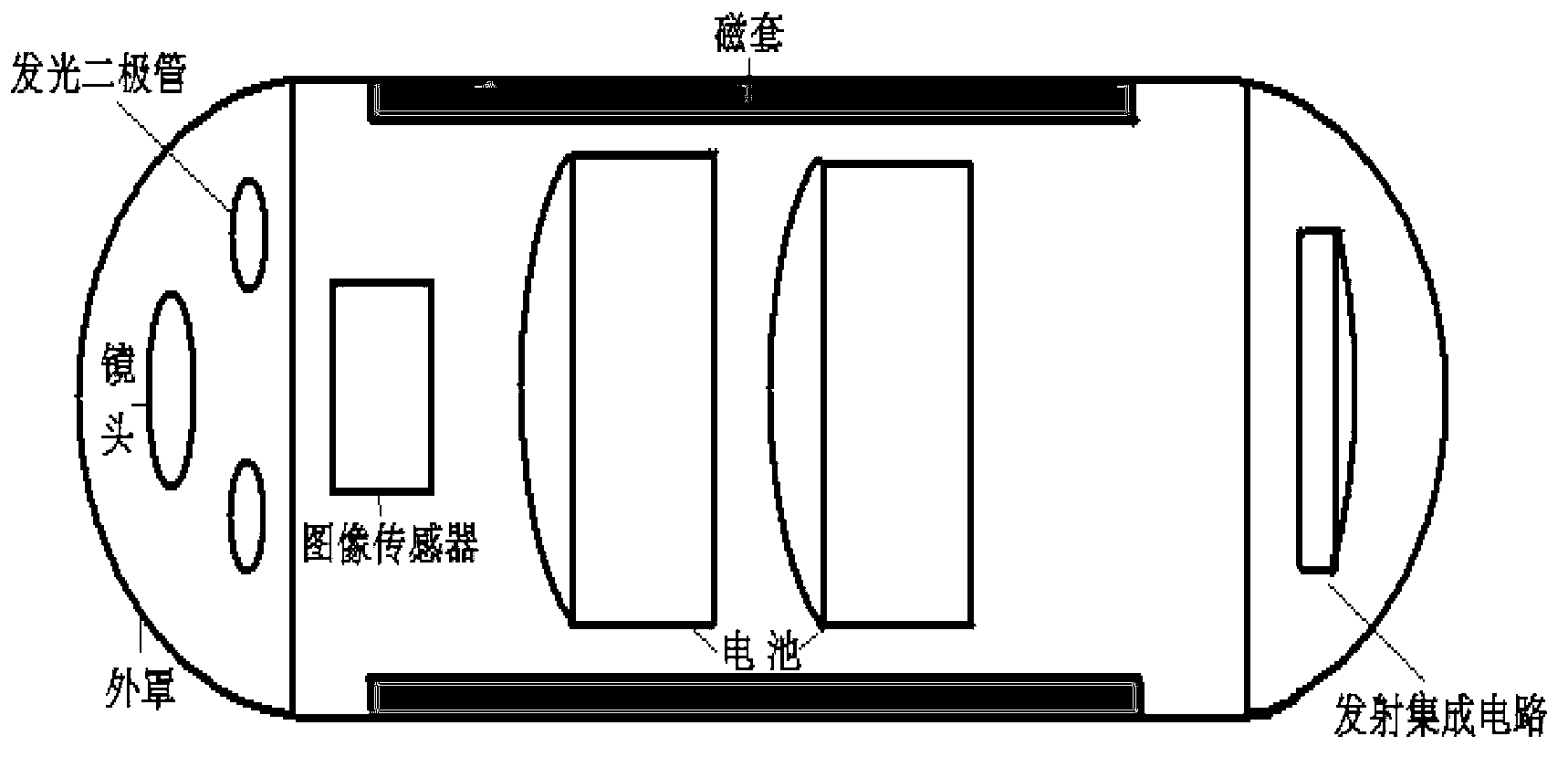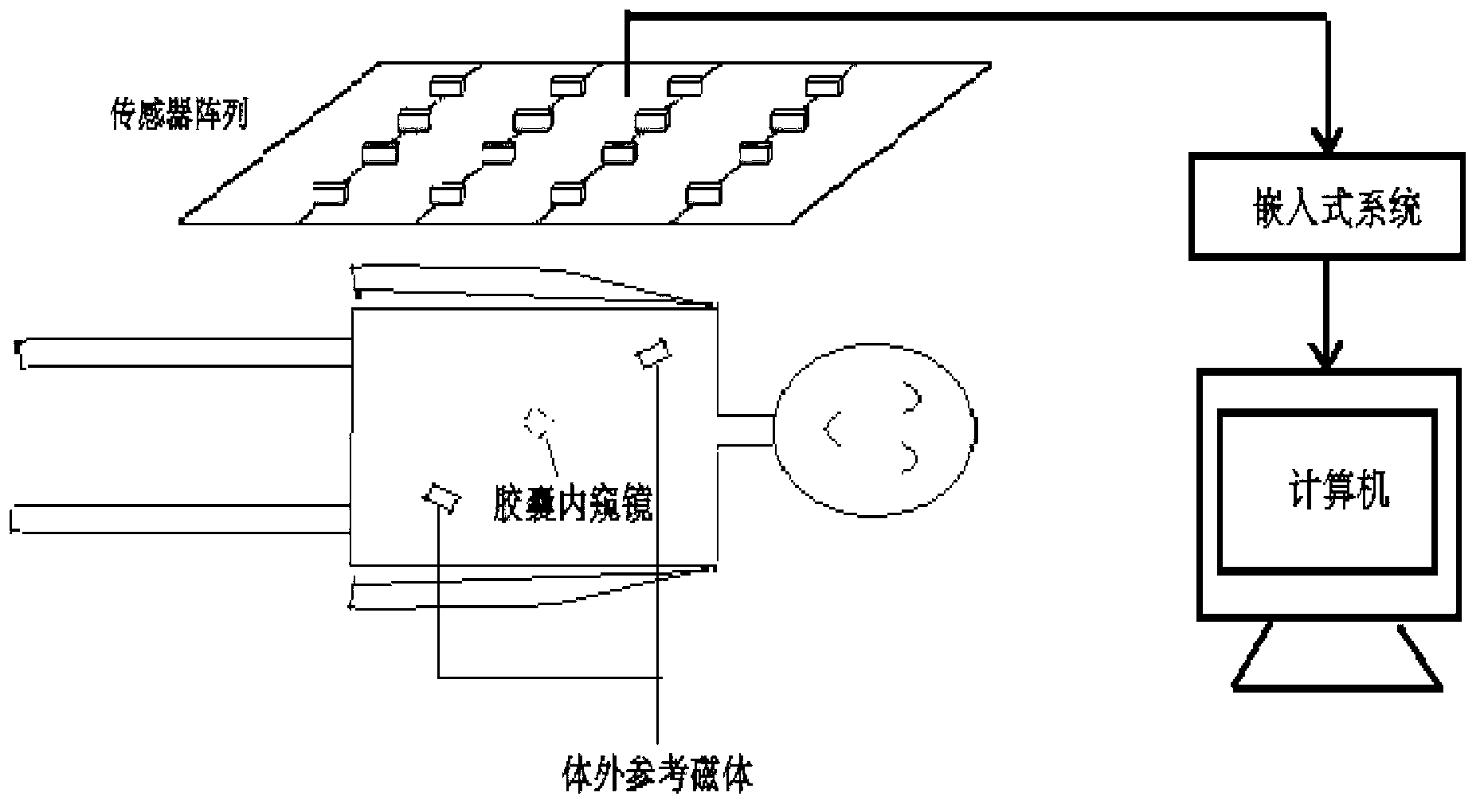Method for measuring depth and three-dimensional size of nidus tissue by capsule endoscope
A technology of capsule endoscopy and measurement methods, which can be used in diagnostic recording/measurement, medical science, sensors, etc., and can solve problems such as long calculation time, unsuitable long time, and need to improve accuracy and speed
- Summary
- Abstract
- Description
- Claims
- Application Information
AI Technical Summary
Problems solved by technology
Method used
Image
Examples
Embodiment 1
[0100] In this embodiment, a method for measuring the tissue depth of a capsule endoscope lesion is proposed, and the flow chart of the method is as follows figure 1 shown, including the following steps:
[0101] ① Obtain the accurate position parameters of the capsule endoscope by placing magnets and magnetoresistive sensors. The specific process is as follows:
[0102] ①-1, such as image 3 , establish a space coordinate system outside the human body as a reference coordinate system, place a capsule endoscope with a ring-shaped thin magnetic sleeve on the outer peripheral sleeve inside the human body, the structure of the capsule endoscope is as follows figure 2 As shown, before obtaining the position parameters of the capsule endoscope, M-1 magnets are placed on the surface of the human body, together with the annular thin magnetic sleeve of the capsule endoscope to form M magnets, which are determined by the arrangement of M magnets The three-dimensional position of the...
Embodiment 2
[0125] In this embodiment, a method for measuring the three-dimensional size of the lesion tissue under capsule endoscopy is proposed, and its flow chart is as follows Figure 7 shown, including the following steps:
[0126] (1) Accurate position parameters and direction parameters of the capsule endoscope before and after the movement of the capsule endoscope and the rotation of the capsule endoscope around the central axis after the movement of the capsule endoscope are acquired by placing magnets and magnetoresistive sensors Angle, the specific process is as follows:
[0127] ⑴-1, such as image 3 , establish a spatial coordinate system outside the human body as a reference coordinate system, place an image sensor outside the human body, and place a capsule endoscope with a ring-shaped thin magnetic sleeve on the outer peripheral sleeve inside the human body. The capsule endoscope structured as figure 2 As shown, before obtaining the position parameters of the capsule e...
PUM
 Login to View More
Login to View More Abstract
Description
Claims
Application Information
 Login to View More
Login to View More - R&D
- Intellectual Property
- Life Sciences
- Materials
- Tech Scout
- Unparalleled Data Quality
- Higher Quality Content
- 60% Fewer Hallucinations
Browse by: Latest US Patents, China's latest patents, Technical Efficacy Thesaurus, Application Domain, Technology Topic, Popular Technical Reports.
© 2025 PatSnap. All rights reserved.Legal|Privacy policy|Modern Slavery Act Transparency Statement|Sitemap|About US| Contact US: help@patsnap.com



